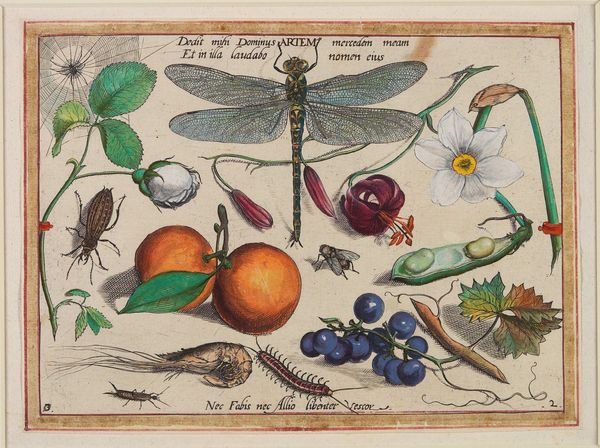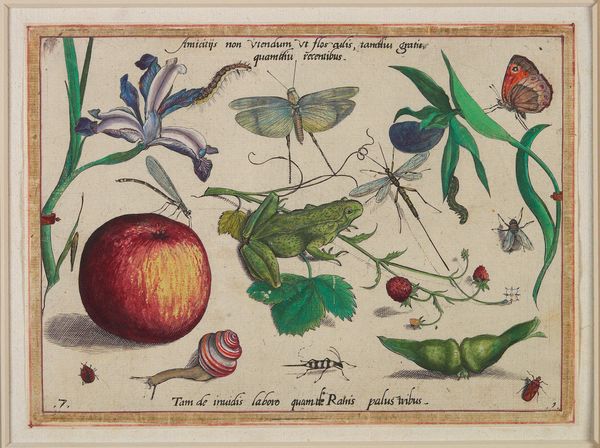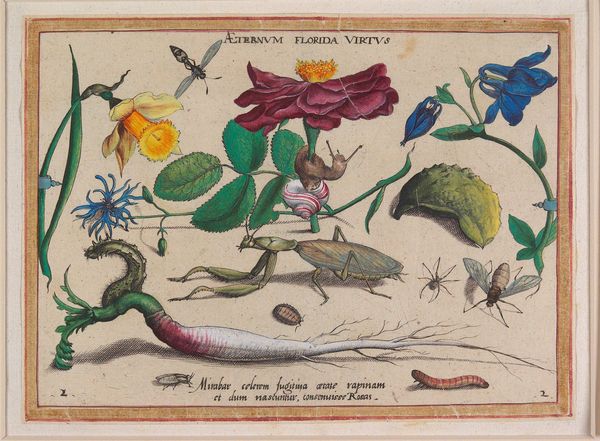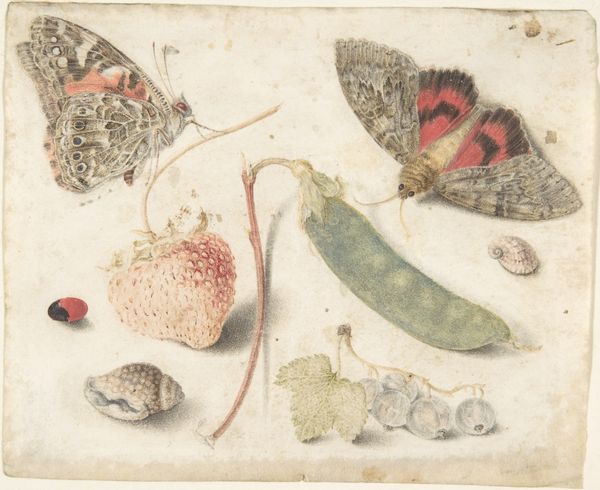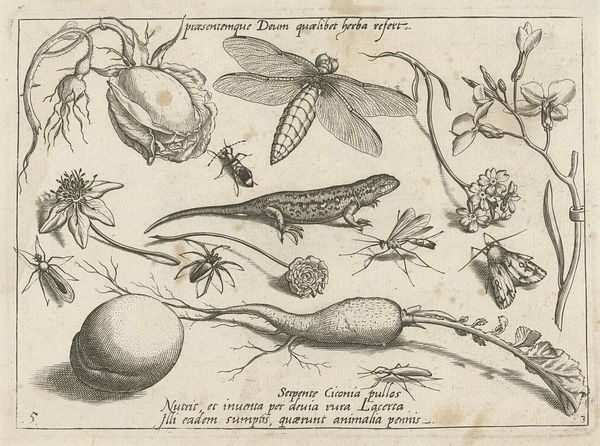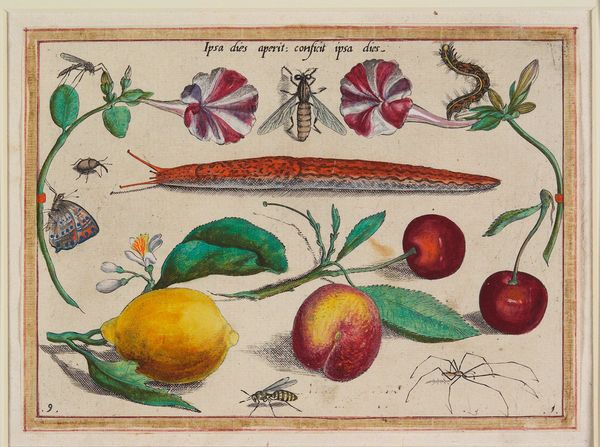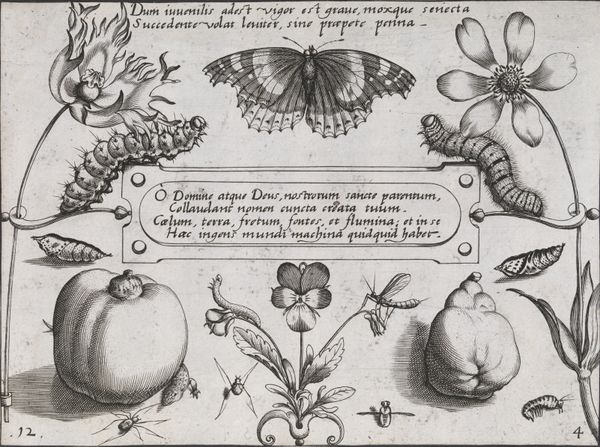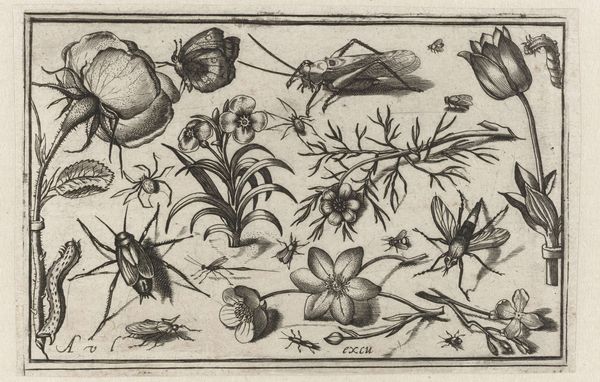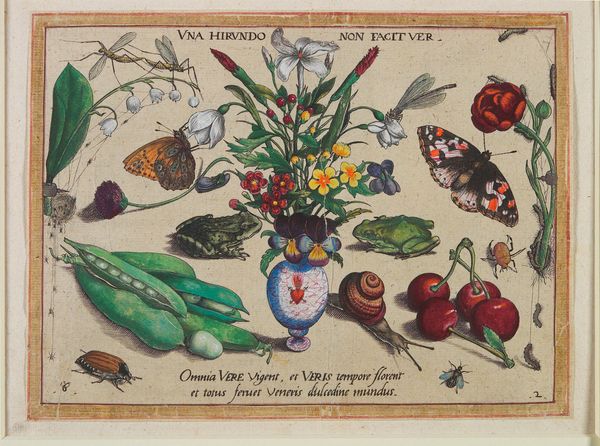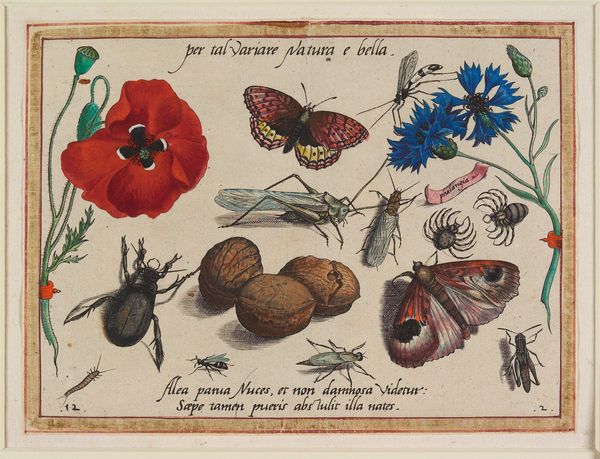
Grata Ioui est querous qui nos seruatque fouetque - Seruanti ciuem querna Corona datur 1592
0:00
0:00
coloured-pencil, print, watercolor
#
coloured-pencil
#
water colours
# print
#
mannerism
#
11_renaissance
#
watercolor
#
coloured pencil
#
watercolor
Dimensions: 6-3/8 x 8-1/2 in. (16.2 x 21.6 cm)
Copyright: Public Domain
Curator: Jacob Hoefnagel's “Grata Ioui est querous qui nos seruatque fouetque - Seruanti ciuem querna Corona datur,” created in 1592, immediately strikes me as a study in contrasts. Editor: My first impression is one of organized chaos. There’s a very precise arrangement, almost scientific in its meticulousness, yet the diversity of forms and colours creates a sense of teeming, vibrant life. It feels almost overwhelming. Curator: Yes, it's fascinating how Hoefnagel uses watercolor and colored pencil to achieve this effect. The precise rendering of each element—the leaves, insects, and the strange lamprey-like creature—invites a very close visual analysis. The composition, the play of light and shadow, all contribute to a complex, balanced whole. The borders are important here, clearly demarking the pictorial space in an intellectual statement on how nature might be categorised and studied. Editor: Beyond the pure formal elements, I see something deeper at play. This work reflects a society deeply interested in natural philosophy but still grappling with its relationship to the natural world, and demonstrates an increasingly scientific viewpoint for its time. Consider the title's reference to the oak and the civic crown –symbols of protection and reward for service. In a time of massive religious conflict and devastating wars, the print resonates with a sense of needing to protect both citizen and city. This image speaks of both the bounty and the burdens of leadership. Curator: That's an interesting reading, although I find more resonance in its compositional organization. Take, for instance, the relationship between the organic forms and geometric space on display. The print can be analyzed purely on these terms. Editor: But the choice of specific fauna can contribute a richer analysis than mere technical expertise. This work serves as a coded, subtle commentary on contemporary European issues of power, class, and ecological responsibility. These texts embedded in the art piece point to its sociohistorical function, far from it just being about “balance and organization." Curator: Perhaps we can agree to differ! What impresses most is the balance of form in an age increasingly interested in accurate visual expression. Editor: And I believe the lasting resonance arises from its potent visual vocabulary and a clear demonstration of period issues of societal power, the balance of life and leadership in early modern Europe.
Comments
No comments
Be the first to comment and join the conversation on the ultimate creative platform.
